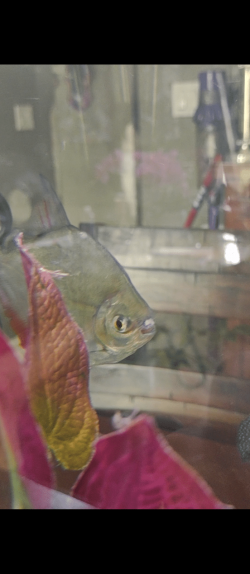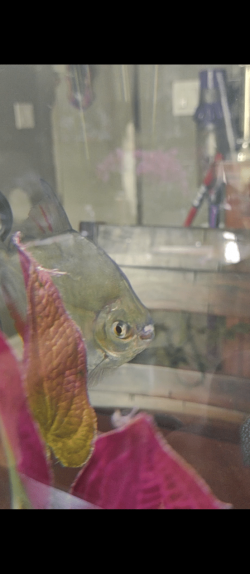Hi and welcome to the forum

It looks like physical damage but could be the start of mouth fungus (Columnaris). Monitor it over the next few days and post more pictures if it gets worse.
You can do a 75% water change and gravel clean the substrate every day for a week, and add some salt, (see directions below) to help reduce the chance of infection.
You should gravel clean the substrate any time you do a water change.
Make sure the fish get plenty of plant matter in their diet because silver dollars are primarily vegetarian.
--------------------------
You have African Rift Lake cichlids in the tank with the silver dollars. The cichlids come from water that has lots of minerals and a high pH (GH 300ppm, pH above 7.6).
The silver dollars come from soft acid water (GH below 150ppm, pH below 7.0).
If the water is hard (has lots of minerals), the silver dollars won't do as well.
If the water is soft, the Rift Lake cichlids won't do as well.
Most Rift Lake cichlids are pretty aggressive and might attack the silver dollars.
--------------------------
SALT
You can add rock salt (often sold as aquarium salt) or swimming pool salt to the aquarium at the dose rate of 1 heaped tablespoon per 20 litres of water. If there is no improvement after 48 hours you can double that dose rate so there is 2 heaped tablespoons of salt per 20 litres.
Keep the salt level like this for at least 2 weeks but no longer than 4 weeks otherwise kidney damage can occur. Kidney damage is more likely to occur in fish from soft water (tetras, Corydoras, angelfish, Bettas & gouramis, loaches) that are exposed to high levels of salt for an extended period of time, and is not an issue with livebearers, rainbowfish or other salt tolerant species.
The salt will not affect the beneficial filter bacteria, fish, plants, shrimp or snails.
After you use salt and the fish have recovered, you do a 10% water change each day for a week using only fresh water that has been dechlorinated. Then do a 20% water change each day for a week. Then you can do bigger water changes after that. This dilutes the salt out of the tank slowly so it doesn't harm the fish.
If you do water changes while using salt, you need to treat the new water with salt before adding it to the tank. This will keep the salt level stable in the tank and minimise stress on the fish.
When you first add salt, add the salt to a small bucket of tank water and dissolve the salt. Then slowly pour the salt water into the tank near the filter outlet. Add the salt over a couple of minutes.





